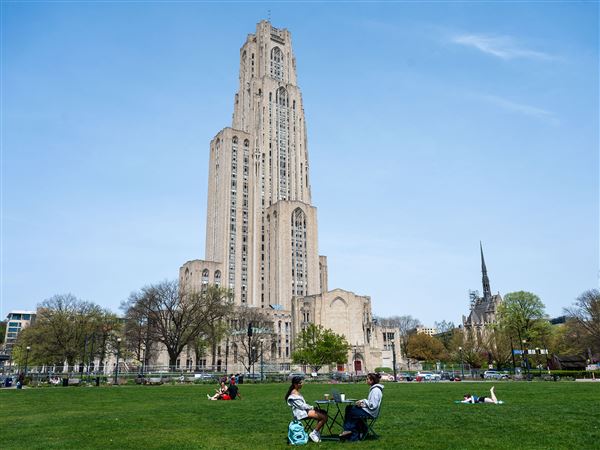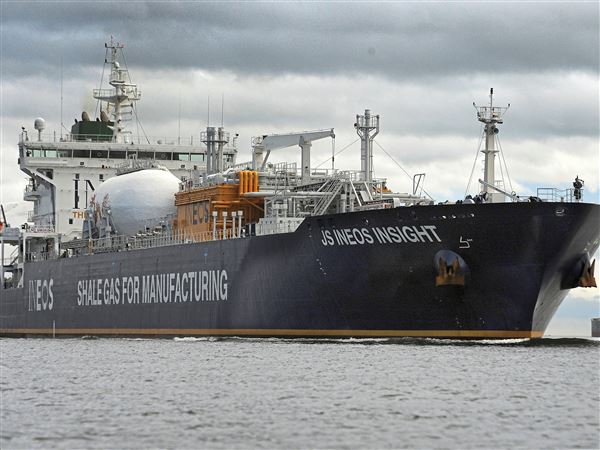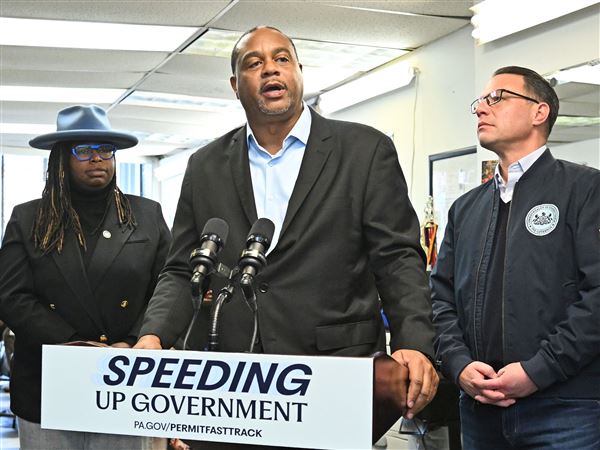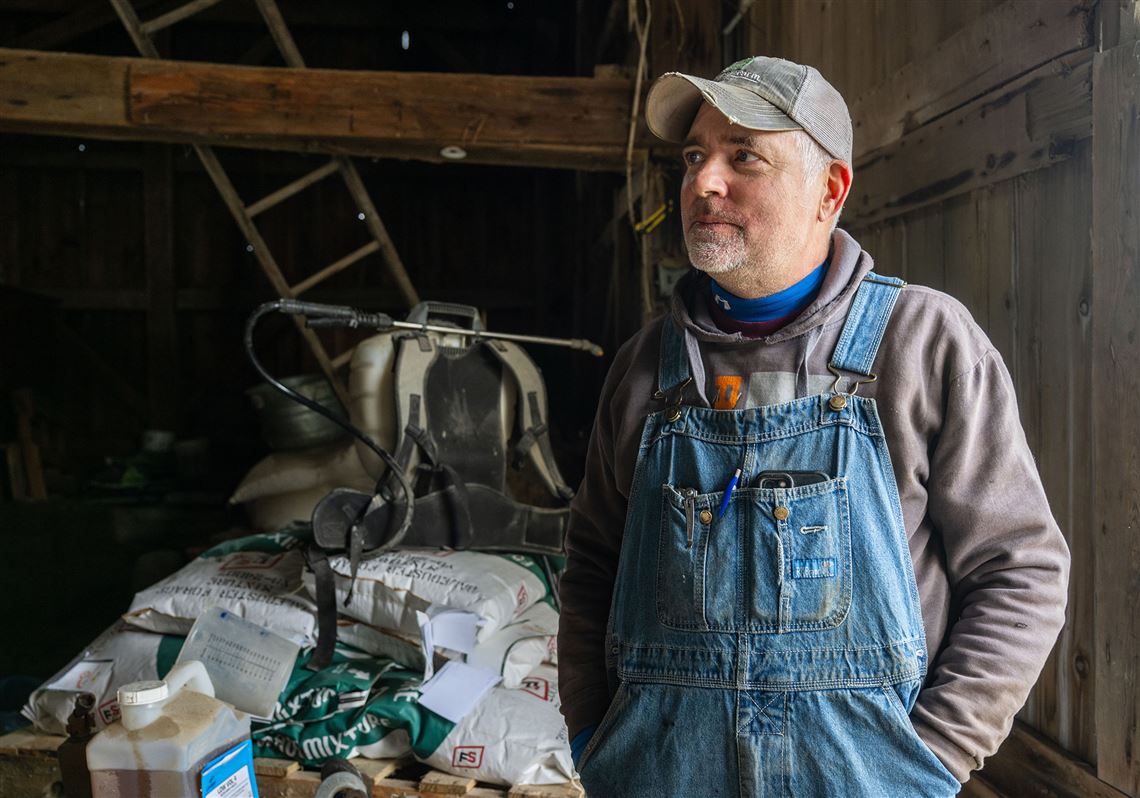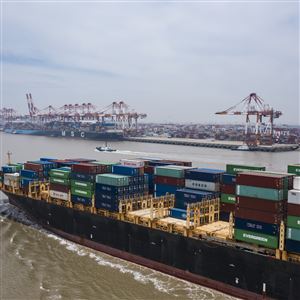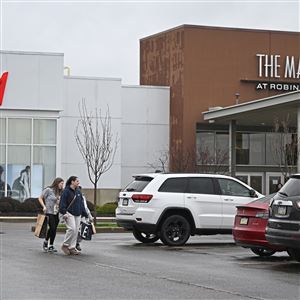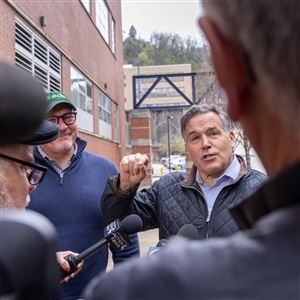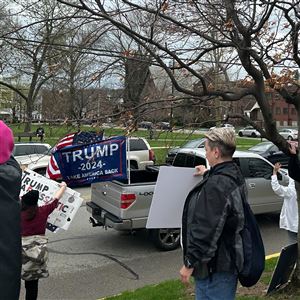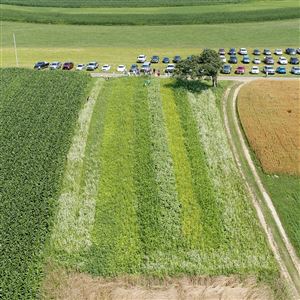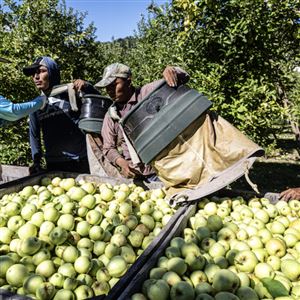Just off of Route 30 on rolling hills about a five-minute drive southwest of the Mall at Robinson, Bill Scott walks around a family farm that dates to just after the Revolutionary War.
The business was established in 1789. To survive that long, Mr. Scott and previous generations have had to navigate economic upturns and downturns and adapt to changing agricultural markets.
Now, Mr. Scott and other farmers are presented with their latest challenge: President Donald Trump’s tariffs, which are already impacting numerous industries and causing uncertainty in stock markets globally.
For Mr. Scott, who farms about 560 acres and has about 220 head of beef cattle — along with selling soybeans and producing various other crops — many parts of his operation will be more expensive.
Tractor parts from Europe. Potash fertilizer from Canada. And whatever he needs quickly off of Amazon to run the farm, items that could be from anywhere in the world.
On Wednesday, Trump announced he was pausing higher tariffs on many countries, a move that dropped them to 10%. Meanwhile, he raised to 125% tariffs on goods from China.
Before the pause, the tariff rate was slated to be 20% on goods from the European Union, 24% for Japan, and 25% on South Korea. Canada and Mexico are unaffected by the new round of tariffs, but remain as high as 25% on those countries because of a separate order by Trump that he said was targeted to help stop fentanyl smuggling.
Companies and customers are trying to keep up with the rapid-fire changes, but there still appear to be tariffs on materials critical to many farmers: 10% on potash from Canada and Mexico, and 25% on steel and aluminum imports globally, according to news reports.
Farmers across Western Pennsylvania are also navigating a period in which various U.S. Department of Agriculture grants and funding sources could be at risk because of the administration’s push to cut spending and reset priorities. Many have relied on that money to hire additional workers holding H-2A visas, along with completing projects to improve sustainability and climate resiliency.
Mr. Scott, 48, was born in the Oakdale area and has always worked on the farm, except for a period in his early 20s when he traveled to California a couple of times a year to work with show cattle. He said he understands Trump’s argument that trade needs to be fairer for the United States.
But many small businesses — including family farms in Pennsylvania — don’t have a rainy day fund to survive higher costs as the battle is waged. “Obviously, there's a trade imbalance that nobody wants, but a lot of businesses can't survive a short-term pain,” Mr. Scott said.
Some Western Pennsylvania farmers said they’re mostly in a wait-and-see mode.
James Thiele, president of the Butler County Farm Bureau, runs a dairy farm with his twin brother and family on about 330 acres near Cabot. They milk about 40 cows, while also growing soybeans, hay, corn, oats, and various cover crops.
Mr. Thiele agrees with the president that other countries have been “ripping us off” in terms of trade, but added it’s premature to know the overall impact of the trade war on his operation. One area that might affect costs is fertilizer prices, he said.
“I do see him trying to get new trade deals with other countries, and using it as a bargaining tool,” Mr. Thiele said of Trump, adding, “You do have to tread lightly because you are playing with our livelihoods.”
Many Democrats have been critical of the tariff plan. At the Pennsylvania Farm Bureau State Legislative Conference in Harrisburg on Wednesday, Gov. Josh Shapiro said the resulting trade war is hurting farmers statewide who have worked to build markets internationally.
Even if farmers sell their products domestically, the uncertainty in the markets is still causing hardships in the agricultural sector, the governor said. He called the tariffs a “tax by another name.”
“It increases the price of goods for consumers and suppliers,” the governor said at the conference. “So when other nations like Mexico and others retaliate against our tariffs, that raises prices for Pennsylvania products abroad. As a result, our farmers lose market share and your sales suffer.”
I do see [Trump] trying to get new trade deals with other countries, and using it as a bargaining tool. You do have to tread lightly because you are playing with our livelihoods.
— James Thiele, president of the Butler County Farm Bureau
Republicans in Congress have backed the president’s plan, including Rep. Glenn Thompson, R-Centre, who chairs the House Agriculture Committee.
“President Trump's 90-day pause on reciprocal tariffs shows that he is willing to negotiate in good faith and will continue to fight for American farmers, manufacturers and workers,” said Kelsey Holt, a spokesperson for Mr. Thompson.
Mr. Thiele and Keith Leydig agree. Mr. Leydig, who farms corn, soybeans, oats, rye, wheat and hay on about 1,500 acres with his family near Berlin in Somerset County, said the short-term pain is worth long-term gain.
Mr. Leydig said that, like Mr. Thiele, most everything he needs to operate is already on the farm. Herbicides could increase in price, he said, but Trump’s tariffs are aimed at creating a better trading environment.
He hasn’t been able to ship soybeans out of the country for four years, for example — something he hopes negotiations with other countries will change.
Other farmers are prepared to weather potential upticks in costs, either because they sell their products domestically or they bought what they needed before Trump started implementing the tariffs.
Jason Oddo operates Coldco Farm in Verona, roughly 10 acres that produce leafy vegetables and other crops for restaurants in the Pittsburgh region.
Minerals and nutrients he buys from Canada could be increasing in price, but his team also decided to buy some things ahead of time — such as stainless steel hoops for mini greenhouses and plant protection — before they could jump in price.
Farmers need to be versatile even outside of the current economic environment, whether because of the weather changes from year to year or other factors besides tariffs, Mr. Oddo said. Though he isn’t a fan of Trump’s plan, he said each business is going to be affected differently.
“We act like farming is one business, but every single farmer is a very different business that bears a different semblance to the next … some guy who’s been growing corn for 50 years is going to have different concerns than me,” Mr. Oddo said.
Jeremy Weber, an associate professor at the University of Pittsburgh’s School of Public and International Affairs, has a doctorate in agricultural and applied economics from the University of Wisconsin-Madison. He also worked at the USDA Economic Research Service for about four years after graduating in 2010, focusing on researching agricultural policy and economics.
We act like farming is one business, but every single farmer is a very different business that bears a different semblance to the next … some guy who’s been growing corn for 50 years is going to have different concerns than me.
— Jason Oddo of Coldco Farm in Verona
Mr. Weber agreed with Mr. Oddo that the agricultural industry is diverse and that different tariffs can hit certain sectors and regions differently.
Trump’s tariffs are more aggressive this time than in his first term, when he targeted China and other countries and focused on steel and aluminum, Mr. Weber said. The Trump administration sent billions of dollars in subsidies to farmers during his first term to cover losses, according to multiple news reports.
“Whatever losses farmers experienced in that first wave … I have to think that the effects will be greater this time around,” Mr. Weber said.
For now, Adam Voll isn’t too concerned. Mr. Voll, farm manager at Soergel Orchards, a fruit and vegetable farm on about 350 acres in Franklin Park, said fertilizer costs could rise, but otherwise, he’s already bought most everything else for growing this season.
As a smaller farmer who sells locally, he’s also not impacted by what happens internationally.
“Whenever you're dealing with grain and soybean and corn, [those farmers] might have a different take because their prices are dictated by larger markets … being a smaller fruit and vegetable person, most of those markets aren’t as affected,” Mr. Voll said.
The coming weeks and months will determine the levels at which farmers from various sectors might be impacted. Years could pass before they see whether Trump’s actions achieve the goal of establishing a fairer environment.
As Mr. Scott walked around his farm earlier this month — showing off cattle and chickens, along with tractors dating to the 1950s and 1960s that are still operational — he wondered about potential ramifications. He sells his beef domestically, but other farmers sell to JBS and Cargill, large packers that ship to other countries.
Depending on the level of tariffs that Trump settles on, other major beef exporting countries such as Brazil and Argentina are going to take advantage of the opening, jumping to serve markets that the U.S. has previously served, Mr. Scott said.
In Trump’s first term, there were more people to “pump the brakes” and make him analyze the impact of decisions such as imposing tariffs on other countries, he said.
“I wish he would measure twice and cut once with things,” Mr. Scott said. “It seems like he's acting before he thinks of the ramifications.”
Ultimately, domestic prices will tell the story about whether Trump’s decisions are helping or hurting the agricultural community, including in Western Pennsylvania, according to Mr. Weber, the Pitt professor.
“Sometimes [farmers] have some of the harvest contracted, so they've already fixed in a price,” Mr. Weber said.
“But then when they get to harvesting, and sell some of the rest on the open market, the more of that they have to sell at a low price, the worse it's going to be for their year.”
First Published: April 13, 2025, 8:00 a.m.
Updated: April 14, 2025, 3:32 p.m.
